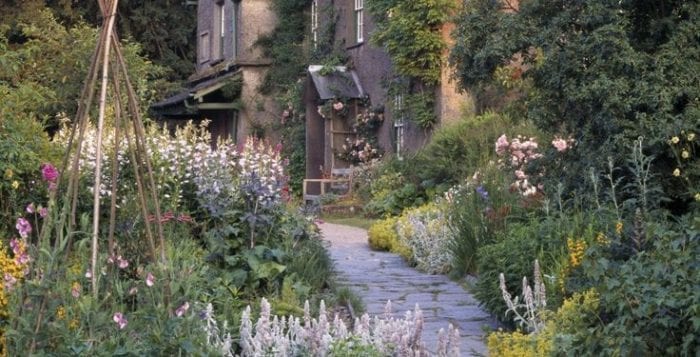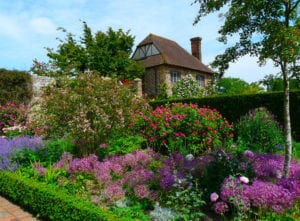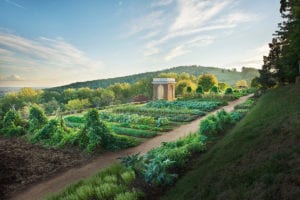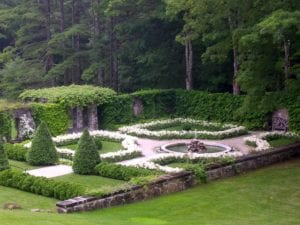By JoAnn Canino
After the fall cleanup and the flower beds are prepared for winter, there isn’t much that has to be done, unless Mother Nature reminds us who is in control.
Thomas Jefferson began his record of the weather in 1776 while in Philadelphia attending a session of the Continental Congress. Wherever he was living, he collected weather and other data in order to compare it to the weather in his gardens at Monticello. He noted the arrival of bluebirds, blackbirds and robins; when he heard frogs for the first time; and the exact date the weeping willow began to leaf.
He diligently noted when the last killing frost occurred, the amount of rainfall, the severity of the winds and the range in temperature. On June 13, 1791, Jefferson traveled to Long Island as secretary of state under President George Washington, along with his friend and neighbor, James Madison. They rode across the island on horseback with William Floyd (notable as one of the signers of the Declaration of Independence). One can only imagine what Long Island looked like to them. In fact, we can read the journals and letters of these early travelers to our island to find out.
In 1670 Daniel Denton (1626-1703) recorded observations while traveling across Long Island. He wrote of “mulberries, persimmons, plums, grapes, strawberries in such abundance in June that the Fields and Woods are ‘died’ red. Groves gleaming in spring with the white bloom of dogwood, glowing in fall with liquid amber and with sassafras and the yellow light of the smooth shafted tulip tree. An innumerable multitude of delightful flowers not only pleasing the eye, but smell … that it may be perceived at sea” (A Brief Description of New-York formerly called New-Netherlands [1670] London, England).
Early settlers discovered the Hempstead Plains. “Towards the middle of Long-Island lyeth a plain 16 miles long, 4 broad, upon which plain grows very fine grass that make exceedingly good hay and is very good pasture for sheep or other ‘cattel’; where you should find neither stick nor stone to hinder the horse heels,” Denton noted. Colonial settlers used it as common pasturage for their sheep and cattle.
Long Island was created about 20,000 years ago when the hills and plains were formed by huge glaciers. Shifting seas, pounding waves and severe weather continue to shape the landscape. From New York Harbor to Montauk Point, Long Island is 118 miles long. Situated between Long Island Sound to our north and the Atlantic Ocean to the south, it is separated from the mainland by the East River, actually considered to be a tidal strait. At its widest, the island is 23 miles. Its highest point, at an elevation of 400.9 feet above sea level, is near Melville at Jayne’s Hill (also called West Hills).
Appreciating the shape of the land and its proximity to the sea, we can begin to understand the forces that shape the landscape today. Kettle lakes like Lake Ronkonkoma were formed when massive boulders of ice melted in the sandy soil and were filled by rising groundwater. Following the glacier, forests grew. Hemlocks and spruce trees gave way to pines and the great oaks. Woods of chestnuts and hickory trees flourished. Swamp lands filled with Atlantic white cedars and red maples. Lush bushes of blueberries, cranberries and huckleberries grew in abundance. The freshwater streams were laden with trout.
Today, less than 80 acres survive of the 60,000 acres that comprised the Hempstead Plains. Nineteen acres are part of Nassau Community College and 60 acres of the Hempstead Plains Preserve are protected by the Nassau County Department of Recreation and Parks.
All around Long Island, natural processes are reshaping the shoreline and the interior. Wind, tides and changing sea levels are eroding the coast, wearing away protective dunes. At the mouth of the Nissequogue River in Smithtown, the salt marshes that protected the freshwater wetlands have almost disappeared because of storm erosion and rising sea levels. On the south shore, the barrier islands are losing about 1 to 2 feet of oceanfront each year. Northeast winds moving west across the coast push large amounts of sand.
We derive a sense of place from these natural elements that shape the environment in which we live. But in many ways we have lost our connection to the land that sustained the early settlers. We tend our gardens and lawns, dropping weed killer and fertilizers that leach into our fragile underground water supply. We ignore the destruction of natural places.
This month as we tune in to Earth’s eternal rhythms on Dec. 21, the winter solstice marks the beginning of our winter. The word “solstice” comes from the Latin, solstitium, which means the sun stands still. Actually, the sun is exactly over the Tropic of Capricorn. Because of the Earth’s tilt, our hemisphere is leaning farthest away from the sun. It is the shortest day of the year. Winter ends on the March equinox, which is derived from the Latin for equal night and day. After Dec. 21, the sun starts moving northward again and spring will be on its way.
Plants and trees that remained green all year have had a special meaning for people in winter. Pine, spruce and fir boughs were placed over doors and windows as symbols of everlasting life. Early Romans marked the solstice with a feast in honor of the god of agriculture, Saturn.
Today we “deck the halls with boughs of holly” and mistletoe as the early Christians did. Holly wreaths were given as gifts. The Pennsylvania German settlements in 1747 had community trees often decorated with apples, nuts and marzipan cookies. The Christmas tree tradition of placing lighted trees in town squares began with the invention of electricity, allowing the glow to continue into the dark night. Festive homes, all decked out with holly, mistletoe and the evergreen tree offer a warm welcome inside.
This time between the winter solstice and the spring equinox can be useful journal time to review the seasons that have passed. Take time to note all the activities and projects in our gardens as well as in our individual journeys. For many of us our gardens are sacred spaces of peace and renewal. While the garden sleeps, we can still take time to meditate on the riches of the Earth and to celebrate the new beginnings of an abundant and prosperous New Year.
JoAnn Canino is an avid journal writer and gardener and a member of the Three Village Garden Club.

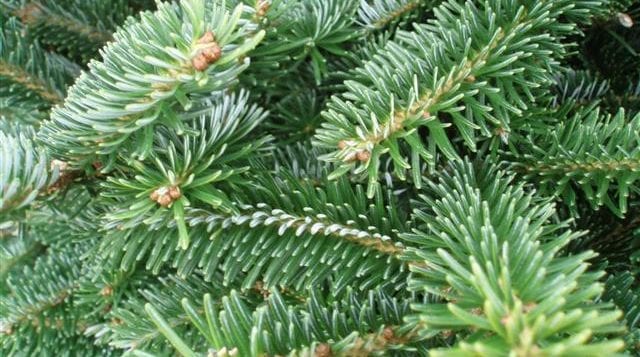
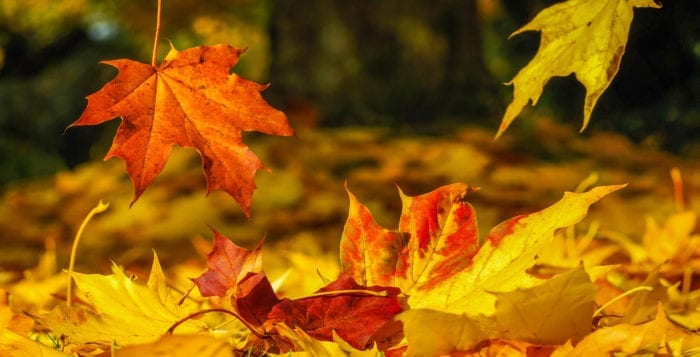
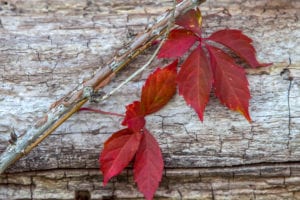 Why do the leaves of some trees, shrubs and vines turn colorful in the fall? What triggers this event? And why do the leaves fall off? We want to be dazzled by the beauty of the countryside and plan day trips north to catch the fall colors. So why is my garden still very green? I go to my bookshelf to find some answers. Two of my favorite books, “The Practical Botanist” by Rick Imes (Simon & Schuster, 1990) and “The Random House Book of How Nature Works” by Steve Parker (1992) provide some of the answers.
Why do the leaves of some trees, shrubs and vines turn colorful in the fall? What triggers this event? And why do the leaves fall off? We want to be dazzled by the beauty of the countryside and plan day trips north to catch the fall colors. So why is my garden still very green? I go to my bookshelf to find some answers. Two of my favorite books, “The Practical Botanist” by Rick Imes (Simon & Schuster, 1990) and “The Random House Book of How Nature Works” by Steve Parker (1992) provide some of the answers.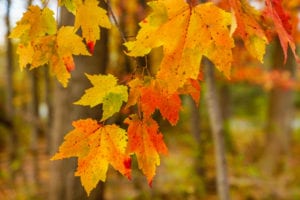 Keeping a garden journal is a way of interacting with your surroundings. Making observations, asking questions and taking detailed notes give you data to compare in each season. Start by recording the weather conditions, wind direction, daily temperature, season of the year, expected rainfall, time of day and the date you made these observations.
Keeping a garden journal is a way of interacting with your surroundings. Making observations, asking questions and taking detailed notes give you data to compare in each season. Start by recording the weather conditions, wind direction, daily temperature, season of the year, expected rainfall, time of day and the date you made these observations.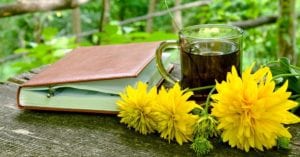 Garden chores for November
Garden chores for November